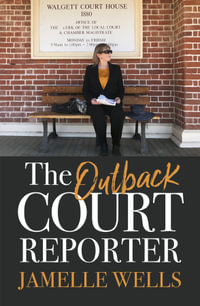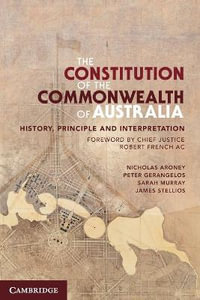Law and History: Major Works Volume 1: Historiography Norman Doe and Russell Sandberg, 'Textual and Contextual Legal History'. * J Phillips, 'Why Legal History Matters' (2010) 41 Victoria University of Wellington Law Review 293-316. [23] * DIbbetson, 'What is Legal History a History of' in A Lewis and M Lobban (ed), Law and History (Oxford University Press, 2004) 33-40. [7] * M Lobban, 'Sociology, History and the "Internal" Study of Law' in R Nobles and D Schiff (eds) Law, Society and Community: Socio-Legal Essays in Honour of Roger Cotterrell (Ashgate, 2014) 39-60 [21] * R M Jarvis, P G Coleman and G L Richmond, 'Contextual Thinking: Why Law Students (and Lawyers) Need to Know History' (1995-1996) 42 Wayne Law Review 1603-1615. [12] * DIbbetson, 'The Challenges of Comparative Legal History' (2013) 1 (1) Comparative Legal History 1-11 [11] * K J M Smith and J P S McLaren 'History's Living Legacy: An Outline of "Modern" Historiography of the Common Law' (2001) 21 Legal Studies 251-324. [73] * M Lobban, 'The Varieties of Legal History' (2012) 5 Clio Themis 1-29. [29] * R W Gordon, 'Critical Legal Histories' (1984) 36 Stanford Law Review 57-125. [69] * D Sugarman and G R Rubin, 'Towards a New History of Law and Material Society in England 1750-1914' in G R Rubin and D Sugarman, (eds) Law, Economy & Society (Professional Books, 1984) 1-123 (+ notes i to ixiii) [187] * B Z Tamanaha, 'The Unrecognized Triumph of Historical Jurisprudence' (2013) 91 Texas Law Review 615-632' [17] Volume 2: Public Law * P Wormald, 'Maitland and Anglo-Saxon Law: Beyond Doomsday Book' in J Hudson, (ed) The History of English Law: Centenary Essays on 'Pollock and Maitland' (Oxford University Press, 1996)1-20.[20] * J H Baker, 'The Changing Concept of a Court' in J H Baker, The Legal Profession and the Common Law (Hambledon Press, 1986) 153-169. [16] * R V Turner, 'The Origins of Common Pleas and the King's Bench' (1977) 21 American Journal of Legal History 238-254. [17] * T S Haskett, 'The Medieval English Court of Chancery' (1996) 14 Law & History Review 245-313. [68] * C Morris, 'William I and the Church Courts' (1967) English Historical Review 449-463.[14] * J H Baker, 'Magna Carta and Personal Liberty' in R Griffith-Jones and M Hill (ed) Magna Carta, Religion and the Rule of Law (Cambridge University Press, 2015) 81-108.[27] * J H Baker, 'English Law and the Renaissance' (1985) 44(1) Cambridge Law Journal 46-61.[15] * N Doe, 'The Positivist Thesis in 15th Century Legal Theory and Practice' (1990) 11 Journal of Legal History 29-39.[10] * D J Seipp, 'The Reception of Canon Law and Civil Law in the Common Law Courts before 1660'(1993) 13 (3) Oxford Journal of Legal Studies 388-420.[32] * J Guy, 'The Origins of the Petition of Right Reconsidered' (1982) 25 2 Historical Journal 289-312.[23] * G W Cox, 'Was the Glorious Revolution a Constitutional Watershed? (2012) 72 (3) Journal of Economic History 567-600. [33] * W Prest, 'Law Reform in the Eighteenth Century' in P Birks (ed), The Life of the Law(Hambledon Press, 1993) 113-123. [10] * H W Arthurs, 'Special Courts, Special Law: Legal Pluralism in Nineteenth Century England' in G R Rubin and D Sugarman (eds), Law, Economy & Society (Professional Books, 1984) 380-411 (+ i to xiii) [44] * J W F Allison, 'History to Understand, and History to Reform, English Public Law', (2013) 72 (3) Cambridge Law Journal 526-557 [32] Volume 3: Land Law * R V Turner, 'Henry II's Aims in Reforming England's Land Law: Feudal or Royalist' in E B King and S J Ridyard, Law in Medieval Life and Thought (Sewanee Medieval Studies, 1990) 121-135, as reprinted in R V Turner, Judges, Administrators and the Common Law in Angevin England (Hambledon Press, 1994) 1-15.[15] * T P Gallanis, 'The Evolution of the Common Law' in T L Harris (ed) Studies in Canon Law and Common Law in Honor of R H Helmholz (The Robbins Collection, 2015) 61-82. [21] * S E Thorne, 'English Feudalism and Estates in Land' (1959) Cambridge Law Journal 193-209. [16] * T G Watkin, 'Feudal Theory, Social Needs and the Rise of the Heritable Fee' (1979) 10 Cambrian Law Review 39-62. [23] * J W Cairns and G Mcleod, 'Thomas Craig, Sir Martin Wright, and Sir William Blackstone: The English Discovery of Feudalism' (2000) 21 Journal of Legal History 54-66. [12] * S F C Milsom, 'Inheritance by Women in the Twelfth and Early Thirteenth Centuries' in M S Arnold, T A Green, S A Scully and S D White (eds) On the Laws and Customs of England: Essays in Honor of Samuel E Thorne (Univeristy of North Carolina Press, 1981) 60-89. [29] * J L Barton, 'The Rise of the Fee Simple' 92 (1976) Law Quarterly Review108-121. [13] * AAvini, 'The Origins of the Modern English Trust Revisited' (1996) 70 Tulane Law Review 1139-1163. [24] * R H Helmholz, 'The Early Enforcement of Uses' (1979) 79 Columbia Law Review 1503-1513. [10] * J Guy, 'The Development of Equitable Jurisdictions 1450-1550' in E W Ives and AH Manchester (eds) Law, Litigants and the Legal Profession (Royal Historical Society Studies in History Series no 36, 1983) 80-86, as reprinted in J Guy, Politics, Law and Counsel in Tudor and Early Stuart England (Ashgate, 2000). [6] * N G Jones, 'Tyrrel's Case (1557) and the Use upon a Use' (1993) 14 Journal of Legal History75-93.[18] * A R Buck, 'The Politics of Land Law in Tudor England 1529-1540' (1990) 11Journal of Legal History200-217. [17] * E Spring, 'Landowners, Lawyers, and Land Law Reform in Nineteenth Century England' (1977) 21(1) American Journal of Legal History 40-59.[19] * N Doe and S Pulleyn, 'The Durability of Maxims of Canon Law: From Regulae Iuristo Canonical Principles' in T L Harris (ed) Studies in Canon Law and Common Law in Honor of R H Helmholz (The Robbins Collection, 2015) 303-336 [33] * W S Holdsworth, 'The Reform of the Land Law: An Historical Retrospect' (1926) 42 Law Quarterly Review 158-183.[26] Volume 4: Law of Obligations * J H Baker, 'The History of the Common Law of Contract' (1977) 21(4) American Journal of Legal History 335-341, as reprinted in J H Baker, Collected Papers on English Legal History (Cambridge University Press, 2013) 1099-1106.[8] * J Biancalana, 'Actions of Covenant 1200-1300' (2002) 20 Legal History Review 1-57. [57] * S F C Milsom, 'Trespass From Henry III to Edward III: Part 1: General Writs' (1958) 74 Law Quarterly Review195-224. [29] * S F C Milsom, 'Trespass From Henry III to Edward III: Part 1: Part 2: Special Writs' (1958) 74 Law Quarterly Review 407-436. [29] * S F C Milsom, 'Trespass From Henry III to Edward III: Part 3: More Special Writs and Conclusions' (1958) 74 Law Quarterly Review 561-590. [29] * S F C Milsom, 'Not Doing is No Trespass: A View of the Boundaries of Case' [1954] Cambridge Law Journal 105-117. [12] * T G Watkin, 'The Significance of "In Consimili Casu" (1979) 23 American Journal of Legal History 283-311.[54] * M S Arnold, 'Accident, Mistake, and Rules of Liability in the Fourteenth Century Law of Torts' (1979- 1980) 128 University of Pennsylvania Law Review 361-378.[17] * J H Baker, 'Origin of the Doctrine of "Consideration" in M S Arnold, T A Green, S A Scully and S D White (eds) On the Laws and Customs of England: Essays in Honor of Samuel E Thorne (University of North Carolina Press, 1981) 336-358.[22] * D Ibbetson, 'Sixteenth Century Contract Law: Slade's Case in Context' (1984) 4 Oxford Journal of Legal Studies 295-317.[22] * S Waddams, 'Equity in EnglishContractLaw: The Impact of the Judicature Acts (1873-75)' (2012) 33(2)Journal of Legal History185-208. [23] * M J Horwitz, 'The Historical Foundations of Modern Contract Law' (1974) 87 Harvard Law Review 917-956. [39] * J H Baker, 'The Common Law of Negligence 1500-1700'in J H Schrage (ed)Negligence: The Comparative History of the Law of Torts (Duncker & Humblot, 2001) 47-71,a s reprinted in J H Baker, Collected Papers on English Legal History (Cambridge University Press, 2013). 1335-1360.[27] * K M. Teeven, A History of Legislative Reform of the Common Law of Contract' (1994-5) 26 University of Toledo Law Review 35-80. [45]
























